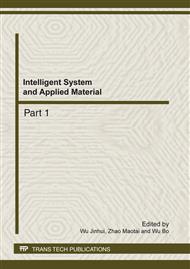p.141
p.146
p.152
p.157
p.161
p.165
p.170
p.176
p.181
Molecular Dynamics Simulations of Polypropylene and Talcum Nanocomposite
Abstract:
Molecular modeling techniques were applied to predicting binding energy for PP/talc and PP-MAH/talc. A supercell containing talc and two polymer chains of 25 repeating units length was constructed. The COMPASS forcefield has been used to represent the interactions in the nanocomposite system. The interactions are improved between the polymer and the clay in the presence of functional groups. And the total energy and potential energy between PP and the talc decreases almost linearly with the simulation time.
Info:
Periodical:
Pages:
161-164
Citation:
Online since:
February 2012
Authors:
Keywords:
Price:
Сopyright:
© 2012 Trans Tech Publications Ltd. All Rights Reserved
Share:
Citation:


